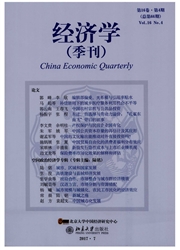

 中文摘要:
中文摘要:
本文首先建立了一个两期模型的理论框架,分析当银行将信息不透明的资产通过证券化卖给连续统个市场投资者时,风险自留监管的效果。基本模型的分析发现:首先,单一风险自留比例不具有普适性;最优风险自留比例与基础资产的风险收益特征、交易双方的风险态度都密切相关。其次,风险自留监管会降低差资产证券化数量的有效信息含量,从而加剧逆向选择程度;而对于好资产,又存在发信号成本。本文进而从道德风险的角度证明,银行的风险态度会影响单一风险自留要求是否能够提高银行监督贷款的激励。因此,在实施风险自留监管时,政府应当结合银行和投资者的风险规避程度等具体情况有针对性地进行,从而比单一风险自留监管更好地提高社会福利。
 英文摘要:
英文摘要:
To evaluate the regulatory effect of risk retention, we first build up a two-period model with asymmetric information on asset value between an originating bank and a con- tinuum of risk averse investors. It is found that a flat rate of retention ratio requirement is never optimal for all markets~ the optimal retention ratio is dependent on the specific characteristics of the underlying assets, as well as on the risk attitudes of both counterparties. Secondly, it aggravates the adverse selection problem for bad assets, because it undermines the effective informational content signaled by their securitization intensity; for good assets, it has signaling cost. The sub-optimality of the flat rate retention ratio is further confirmed in the moral hazard setting. Therefore, to improve social welfare in a more efficient way, the regulators should take the risk attitudes of both counterparties into consideration.
 同期刊论文项目
同期刊论文项目
 同项目期刊论文
同项目期刊论文
 期刊信息
期刊信息
